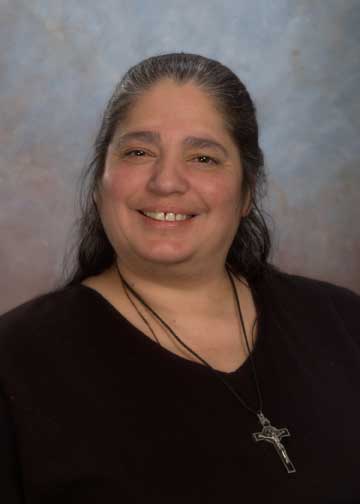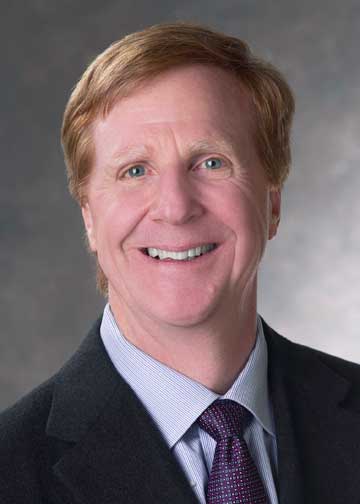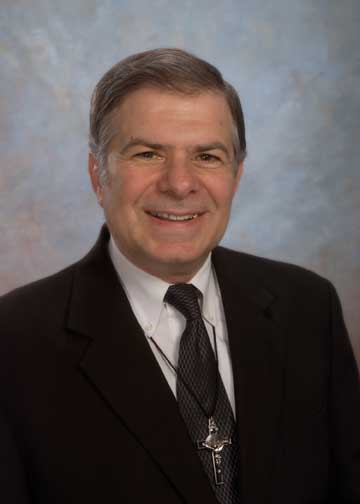Next story: Best Films of 2015
St. Luke's Mission of Mercy: Buffalo's Largest Recycling Project
by Alan Oberst

St. Luke's Mission of Mercy: Buffalo's Largest Recycling Project
After a year filled with self-esteem shots in the arm for Buffalo, something extraordinary happened that many likely overlooked, especially among the ever-increasing numbers (see recent Pew Poll) of those who tune out all things religious. In a unique joint announcement, Buffalo’s Catholic and Episcopal bishops reminded us that Buffalo’s rising tide must lift all boats. As Buffalo’s economy revs into overdrive, we can’t just leave the unfortunate behind, choking on our exhaust.
While making this announcement, the bishops must have had in mind folks like those you’ll find any and every day at St. Luke’s Mission of Mercy, deep in Buffalo’s East Side poverty belt. I recently got to know the St. Luke’s family, not just to write about what I found, but also as a co-founder of the Buffalo Mass Mob, a social media initiative to spotlight urban churches by inviting the community to a Mass celebration. The Buffalo Mass Mob will visit St. Luke’s this Sunday, January 10, at 1pm (details in this article).




I also went there to find people who have been grappling, for over two decades, with the issues raised in the bishops’ joint statement. And personally, as a Catholic struggling to understand how my Diocese can abandon parishes in the very areas where human needs are greatest, I hoped to learn something about the church’s relevance in left-behind urban neighborhoods.
Interruptions are God calling
The story of how St. Luke’s Mission of Mercy came to be is easily found online (for example, see the history section of their website, link in this article) and has been well told (for example, the Esmondesque “The Miracle on Sycamore Street”). In broadest brushstrokes, Amy Betros was owner of the well-loved Amy’s Place in University Heights. On a pilgrimage to a holy site in Europe, she was inspired by a devotional prayer she encountered, and a related teaching. On her return, she began a personal mission of service to the poor and downtrodden at her restaurant and her home.
In 1992, accompanying Bishop Grosz on a pilgrimage to Fatima shrine in Portugal, she encountered another Buffalonian, Norm Paolini, a researcher at Roswell Park, who had also been moved to a personal mission of service. On their return, they began to work together, and soon felt called to begin a full-time ministry of service. In 1993 they retired from their full-time jobs, and, with financial backing from Eileen Nanula, mother of Senator Anthony Nanula, they purchased the entire St. Luke’s parish complex, which the Diocese had just closed. In the summer of 1994, St. Luke’s Mission of Mercy opened.
These encounters, these serendipities, others might say, represent to Amy and Norm God leading them, step by step, to their ministry and mission they founded. This is a theme that also affects how they deal with those they serve. People living in poverty often live lives of unpredictability and chaos, moving from crisis to crisis. At St. Luke’s, you never know who is going to knock on the door, and with what need. “Interruptions are God calling,” Amy told me. Judging by that, God is at St. Luke’s all the time.
We do what we need to do, not what we have to do.
I visited St. Luke’s for two Masses, and a tour of the mission, and there were few moments when I didn’t see people reaching out for help, or literally knocking at the door. People needing a few dollars to pay a heating bill, people needing a hug, or having news to share. “Sorry, we don’t give out money on Sunday—we only do God,” Amy told one man after Mass. He trusted her enough to be OK with that, and would come by the next day.
This trust is essential to their work, and resonates with a population frequently preyed upon, let down, and disappointed. When I first visited the St. Luke’s office, Amy was sitting with a man who had been having trouble managing his affairs, so St. Luke’s was managing some of his finances. He was concerned about access to money. He was saying, “but you’re not letting me speak, here.” She told him, kindly but firmly, “We’ve been through this before, and I’ve got some appointments. We took care of that for you, didn’t we?” Yes, he admitted. “Have we ever let you down?” “No.” “And are there any other things you need right now?” “No.” In the end, he knew he could trust her. “It took me ten years to get to the point where I could do this,” she said about the level of trust the community has in St. Luke’s.
Amy told me, “We’re not like DSS [Erie County Department of Social Services]. DSS does what they have to do. We don’t have to do anything. We’re called to do our job.” They don’t take funding with any strings attached, so that they can do what they need to do.
A church, a mall, a school. And home.
The true scale of the work at St. Luke’s is only evident from taking a tour. Every building from the parish has been reused, and every nook and cranny either houses a program or stores items for those in need. Intrigued by references to “the mall,” I visited the old school building, where former classrooms on either side of the hallway featured a collection of clothing, food, and toys for all ages. A men’s department, housewares, baby needs, etc. Each room was packed, but well-organized and looked after. “Customers” (nothing is sold there) come from as far away as the rural towns. It was, essentially, a massive recycling project, created by a caring culture, rather than the consumer culture on display at suburban malls.
Upstairs, St. Lukes has started a school with forty-five kids, from four years old to eighth grade. Some have gotten full scholarships at Canisius, which has close ties to St. Luke’s.
The former convent, perhaps ironically, is now men’s housing. Some properties around the church have also been rehabbed for housing. And in 2015, Gospa Village opened on vacant land next to the church, with housing specifically designed for the needs of single mothers and their families. Gospa Village will eventually expand to include a dozen or more houses, along with a playground, garden, and community space.
St. Luke’s isn’t “just” a mission. For many, it’s home. For some, it’s everything.
Want to make God laugh? Tell him about your plans.
I caught up with Norm Paolini, Amy’s partner in ministry, after a Mass, on his way to the mission center basement for a lunch celebrating their ministry associates. I sat next to him, but could never really begin asking questions. Person after person came by, some sharing deeply spiritual matters so personal I was almost embarrassed to be hearing them. I learned more about St. Luke’s, and Norm, from this exchange than I could have from any question I’d prepared in advance. So my question list stayed in my pocket.
One resident of St. Luke’s housing for men who sat down to talk with Norm began with a quote he’d heard, “Want to make God laugh? Tell him about your plans.” That could be a theme at St. Luke’s. Norm told me that he, Amy, and many of their missionaries had suffered rejection from family members when their life “plans” suddenly changed to full-time ministry work with no salary.
In between these conversations, Norm told about several people in the cafeteria of over one hundred present—each of whose lives he’d been involved in, in one way or another. One woman with small children was a child herself when she was one of the first helped by Norm and Amy shortly after they opened the mission. During the crack epidemic, her mother walked the streets around the church to make money for the drug, leaving her children home alone, crying. They were able to get the children into foster care. “She’s been part of the St. Luke’s family since the beginning,” Norm told me.
No questions about number of meals served and tons of food and clothing distributed could have evinced the true spirit of St. Luke’s like these revealing glimpses. Glimpses at the work of caring going on throughout that room that afternoon, work that has been going on day in and day out, week in and week out, month in and month out, year in and year out. For over two decades.
“It’s not just the individual ministries” that matter at St. Luke’s, I heard Amy say, “it’s that we endure day to day. We’re called to endure.” Norm told me, “We’re building the Kingdom of God here.”
Devotion to mercy
St. Luke’s Mission of Mercy is inspired and informed by a deep, almost mystical Catholicism.
In the 1930s, a Polish nun named Sister Faustina recorded, in her diary, a series of apparitions of Jesus. In the apparitions, she wrote, Jesus revealed to her an extraordinary devotion to his mercy, including teachings, a rosary prayer now known as the Chaplet of Mercy, and a set of images. Many Catholics around the world now follow this devotion, and Sister Faustina was made Saint Faustina in 2000—the first saint of the new millennium. St. Luke’s, originally a Polish parish, has a long connection to this devotion, and has long had a reproduction of one of Faustina’s iconic images flanking the altar.
In 1993, with the Diocese closing four East Side parishes, and Amy and Norm looking for a mission site, which did they ultimately purchase? The one with the divine mercy image. “That’s why we bought this church,” Amy told me.
This devotion is not just in the St. Luke’s Mission of Mercy name, and in its logo, but also at the heart of its daily practice. Faustina wrote in her diary that Christ told her, “I demand from you the deeds of mercy, which are to arise out of love for me.” And for over two decades the founders, associates, and missionaries of St. Lukes have endeavored to do exactly that.
Their award-winning singing group, led by Dennis and Sue Gilhooly, is named Voices of Mercy. And their weekly radio program, at 3pm Saturdays on Catholic Radio 101.7, is named the Hour of Mercy.
Everywhere I go, people belong to St. Luke’s.
I found no shortage of people eager to talk about St. Luke’s. As much as St. Luke’s is surrounded by need, it is also borne along by a vast network of supporters and volunteers, including the parishes in the Diocese: “I don’t think there’s one that doesn’t help us,” she added. And many churches of other denominations help out on volunteer work parties.
How can you help St. Luke’s Mission of Mercy?
■ Attend this Sunday’s Buffalo Mass Mob at St. Luke’s: BuffaloMassMob.org.
■ Volunteer or donate: StLukesMissionOfMercy.org.
■ Volunteer with Churches in Action: ChurchesInAction.com.
■ Support St. Luke’s signature fundraiser, the Code Blue Bash on Friday, January 22, 7pm to 10pm, at Templeton Landing. $20 donation includes finger foods and desserts supplied by Rich Products, and funds raised support St. Luke’s Code Blue shelter. Tickets: www.sellingticket.com/stlukes.
One of those efforts, Churches In Action (CIA), has an especial relationship with St. Luke’s. Its volunteers come from over a dozen suburban churches and want to do “hands-on mission work, instead of just writing checks,” co-founder (along with his brother) Howard Rich told me. One of Rich Products’ top Buffalo-area executives, Howard is such a St. Luke’s booster that he cleared nearly an hour on his schedule on less than a day’s notice to talk about St. Luke’s.
Founded not long after St. Luke’s, CIA has done critical work at St. Luke’s. Their work, along with financial, food, and equipment donations from Rich Products help make possible the two hundred meals a day St. Luke’s serves. This is a core ministry, and the kitchen is one of their nerve centers. “Everything that happens, happens with food,” Amy, the veteran restaurateur, told me.
Howard’s St. Luke’s stories were rapid-fire and filled several notebook pages, including the harrowing state of the kitchen at the time the mission took over the church, and the gradual process of improving the facilities over two decades. “Sometimes it seemed like three steps forward and two steps back, but there was progress every year,” he told me. And the moment when the businessman first met the missionary: “Sorry, we don’t shake hands here,” Amy told him as she gave him a hug.
“We’re all part of one family,” Howard told me about St. Luke’s. And indeed, whenever I mention St. Luke’s, I hear stories from people with personal connections there. “Everywhere I go, people belong to St. Luke’s,” Amy told me.
Laudato Si
As I talked with Amy, I couldn’t help but think of Pope Francis’ recent environmental encyclical, Laudato Si. The encyclical has perhaps attracted more attention than anything yet done by this most dynamic of modern popes, yet it’s not certain that Catholics have paid more than superficial attention. Reactions I’ve seen range from “let’s put solar panels on the roof of the church,” to “the Pope wants us to drive a Prius.”
But the Pope’s message goes much deeper: our present environmental fix is a result of modern Man’s throwaway culture. We throw away tons of trash, tons of food, and also tons of greenhouse gasses into the atmosphere. But as Sister Sharon Goodremote, chair of the Diocese of Buffalo’s Care for Creation Committee loves to point out, there is no “away.” Everything stays with us, as we soil our own global nest.
In North America, we take it much further. Amid homelessness, we throw away houses. We drive unbounded sprawl by throwing away urban neighborhoods. We even, to our everlasting shame, throw away our churches and parishes. Discarded churches leave communities bereft of the vital corporeal and spiritual services they once provided, while their vacant blight adds real insult to that real injury.
But St. Luke’s is the antithesis of this throwaway culture. They embrace those who “society discards,” as Amy characterized it, many of whom have mental and emotional issues. And physically, little goes to waste there. Every year, they put tons of donated items and donated food into the hands, homes, and bellies of people in need.
Although no one there would say so, and in fact rejected the suggestion when I made it, St. Luke’s sends an unmistakable message to the Diocese about the folly of reducing the presence of the church in the very places most in need. The church is short on priests and funds, but also rich in buildings and needs. St. Luke’s shows the needs, and also that there are those who want to help minister to the needs. As the bishops remind secular leaders not to leave the unfortunate behind, they themselves need to remind their lay leaders and supporters that we need to refocus and reinvest where the needs are greatest and deepest.
The Pope’s encyclical implicitly rejects suburban sprawl accompanied by urban abandonment. It’s time for the Catholic church to come home, to the urban centers that nurtured it. And return to the missionary spirit that spread the church throughout North America, as earlier throughout the Roman Empire, by fearlessly serving the disadvantaged and downtrodden—usually in cities.
Look for answers and inspiration at St. Luke’s.
blog comments powered by Disqus|
Issue Navigation> Issue Index > v15n01 (Week of Thursday, January 6) > St. Luke's Mission of Mercy: Buffalo's Largest Recycling Project This Week's Issue • Artvoice Daily • Artvoice TV • Events Calendar • Classifieds |









 Current Issue
Current Issue